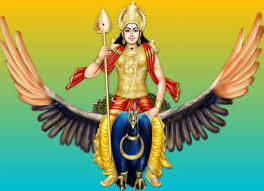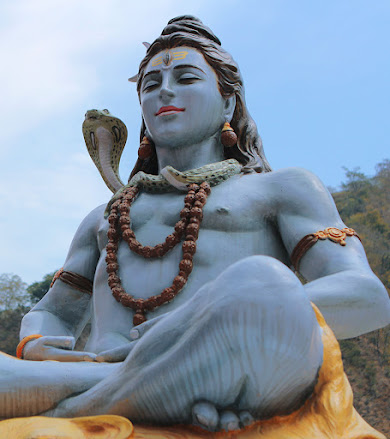Why People workship Lord Shiva In Saavan ?
Lord Shiva
Lord Shiva, also known as Mahadeva or the Great God, holds significant importance in Hindu mythology. He is revered as the supreme deity in Shaivism and is considered the destroyer of evil and the transformer of the universe. The stories surrounding Lord Shiva are abundant and captivating, reflecting his multifaceted nature. Here is a brief overview of some prominent stories associated with Lord Shiva:
Birth of Lord Shiva:
According to Hindu mythology, Lord Shiva is considered eternal and devoid of birth and death. However, there are various legends surrounding his origin. One popular story suggests that Lord Shiva emerged from an infinite pillar of light, known as the Linga, which signified the formless and omnipotent nature of divinity.
Marriage to Goddess Parvati:
One of the most well-known stories revolves around Lord Shiva's marriage to Goddess Parvati. Parvati, an incarnation of the goddess Shakti, performed intense penance to win Shiva's heart. After testing her devotion, Lord Shiva accepted her as his wife. Their union symbolizes the divine balance of masculine and feminine energies.
Samudra Manthan (Churning of the Ocean):
During the epic tale of Samudra Manthan, gods and demons churned the celestial ocean to obtain the elixir of immortality. However, poison emerged from the depths, threatening to destroy the universe. To save all beings, Lord Shiva drank the poison, which turned his throat blue, earning him the name "Neelkantha" (the blue-throated one).
Wife Of Lord Shiva
Sons of Lord Shiva
Dance of Lord Shiva (Tandava):
Lord Shiva is often depicted performing the Tandava, a powerful cosmic dance representing creation, preservation, and destruction. The Tandava dance symbolizes the eternal rhythm of life and the cosmic cycles.
Destruction of Tripura:
The legend of Tripura Samhara narrates how Lord Shiva destroyed the three cities (Tripura) built by the demon brothers who obtained invincible powers. With his divine arrow, Lord Shiva destroyed the cities, putting an end to the tyranny of the demons.
These are just a few glimpses into the vast and diverse mythology surrounding Lord Shiva. His stories not only provide insights into the complexities of the divine but also offer profound philosophical teachings, emphasizing the importance of balance, devotion, and the ultimate truth. Lord Shiva's worship is prevalent worldwide, with numerous temples and festivals dedicated to his reverence.
India, a land of diverse cultures and rich traditions, holds a special place for the worship of gods and goddesses. One such deity who is revered and worshipped with profound devotion is Lord Shiva. The movie "Shiv Mahima" encapsulates the essence of this devotion, taking us on a mesmerizing journey into the divine splendor of Lord Shiva.
Unveiling the Narrative:
"Shiv Mahima" unfolds as a cinematic spectacle that beautifully weaves together mythology, spirituality, and devotion. The movie narrates various tales from Hindu scriptures, highlighting the significance of Lord Shiva in the lives of his devotees. Through vivid storytelling and compelling performances, the film takes us on a journey that is both enlightening and emotionally stirring.
Visual Splendor and Musical Extravaganza:
One of the remarkable aspects of "Shiv Mahima" is its visual grandeur. The movie showcases breathtaking landscapes, intricate sets, and awe-inspiring VFX, creating a captivating visual experience. From the sacred Mount Kailash to the holy Ganges, the film transports the audience to the divine realms associated with Lord Shiva.
Complementing the stunning visuals is a soul-stirring musical score. The film's soundtrack features melodious bhajans (devotional songs) and devotional chants that evoke a sense of spiritual connection. The music acts as a divine medium, enhancing the overall cinematic experience and invoking a deep sense of reverence for Lord Shiva.
Portrayal of Lord Shiva:
The portrayal of Lord Shiva in "Shiv Mahima" is a testament to the divine magnificence of the deity. The film beautifully captures the various aspects of Lord Shiva, depicting him as the benevolent god who grants boons to his devotees, the fierce destroyer of evil forces, and the epitome of compassion. The performances of the actors portraying Lord Shiva and his divine consort Parvati are commendable, breathing life into these iconic characters.
Exploring Devotion and Faith:
"Shiv Mahima" goes beyond being a cinematic depiction of Lord Shiva; it delves into the profound faith and devotion of his followers. The movie portrays the unshakeable belief that devotees have in the benevolence and omnipresence of Lord Shiva. It showcases their unwavering dedication, their struggles, and the miracles that unfold as a result of their undying devotion. Through these narratives, the film serves as a source of inspiration, reminding viewers of the power of faith and the divine grace that can be attained through devotion.
Legacy and Impact:
"Shiv Mahima" has left an indelible mark on Indian cinema and the hearts of its viewers. It has served as a catalyst for deepening the spiritual connection of many, inspiring them to explore the profound teachings and mythology surrounding Lord Shiva. The film's success has sparked a renewed interest in devotional cinema, with subsequent movies further exploring the divine stories of Hindu deities.
Why People workship lord shiv in Saavan ?
In the Hindu religion, the month of Shravan (also known as Saavan) holds great significance, and Lord Shiva is particularly worshipped during this time. There are several reasons why people worship Lord Shiva in Saavan:
Mythological Significance: According to Hindu mythology, the month of Shravan is considered auspicious and dedicated to Lord Shiva. It is believed that during this time, Lord Shiva performed the Tandava, a cosmic dance that signifies creation, preservation, and destruction. Therefore, worshipping Lord Shiva in Saavan is believed to invoke his blessings and divine grace.
Fasting and Devotion: Devotees often observe fasts and engage in intense devotion during the month of Shravan. They abstain from consuming certain foods and indulge in prayers, meditation, and reading religious scriptures. By dedicating themselves to the worship of Lord Shiva, they seek spiritual growth and purification.
Seeking Blessings: People worship Lord Shiva in Saavan to seek his blessings and protection. They believe that by offering prayers, performing rituals, and visiting temples dedicated to Lord Shiva, they can receive his divine grace, blessings for well-being, and fulfillment of their desires.
Auspicious Occasions: Saavan is also considered an auspicious time for various ceremonies and rituals, including weddings, thread ceremonies, and other religious functions. Worshipping Lord Shiva during this period is believed to bring good fortune and success to these events.
Symbolism: Lord Shiva is often associated with qualities like transformation, destruction of negative forces, and ultimate liberation. Saavan is seen as a time of transformation and purification, and by worshipping Lord Shiva, people seek to let go of negative influences, purify their souls, and progress on the path of spirituality.
It is important to note that these reasons may vary among individuals and different regions within the Hindu community. Worship practices and beliefs can differ based on cultural traditions and personal devotion.
Conclusion:
"Shiv Mahima" stands as a cinematic masterpiece that encapsulates the divine splendor of Lord Shiva. With its captivating storytelling, breathtaking visuals, and enchanting music, the film takes viewers on a transformative journey into the realms of devotion and spirituality. It serves as a reminder of the enduring power of faith and the profound impact that devotion can have on one's life. "Shiv Mahima" continues to inspire and ignite the hearts of audiences, enabling them to experience the divine presence of Lord Shiva in their own lives.
FAq
Who is Lord Shiva?
Lord Shiva is a major deity in Hinduism and is considered the supreme being, the destroyer of evil, and the transformer of the universe.
What are the different names of Lord Shiva?
Lord Shiva is known by various names, including Mahadeva, Shankara, Bholenath, Neelkanth, Rudra, and Nataraja, among others.
What does Lord Shiva symbolize?
Lord Shiva symbolizes various aspects, including destruction, transformation, meditation, asceticism, and the ultimate reality beyond the material world.
What are the attributes and symbols associated with Lord Shiva?
Lord Shiva is often depicted with matted hair, a crescent moon on his forehead, a third eye, a snake around his neck, a trident (trishul) in his hand, and sitting in a meditative pose on Mount Kailash.
What is the significance of Lord Shiva's third eye?
Lord Shiva's third eye represents wisdom, knowledge, and spiritual insight. When opened, it emits a powerful beam that can destroy ignorance and illusion.
What is the story behind Lord Shiva's blue throat (Neelkanth)?
According to mythology, during the churning of the cosmic ocean, poison emerged, endangering the world. To save the universe, Lord Shiva consumed the poison, which turned his throat blue.
What are the major festivals associated with Lord Shiva?
The major festivals dedicated to Lord Shiva include Mahashivaratri, which celebrates his marriage to Goddess Parvati, and Shravan (Saavan) month, during which devotees observe special rituals and fasts.
What is the significance of the Shiva Lingam?
The Shiva Lingam is a symbol of Lord Shiva and represents his divine power and creative energy. It is worshipped as a phallic symbol that signifies the union of masculine and feminine principles.
What is the role of Lord Shiva in the Hindu Trinity?
Lord Shiva is one of the three major deities in the Hindu Trinity, known as the Trimurti. He represents the aspect of destruction and is accompanied by Brahma, the creator, and Vishnu, the preserver.
How can one seek the blessings of Lord Shiva?
Devotees seek the blessings of Lord Shiva through prayers, meditation, performing rituals and ceremonies, visiting temples dedicated to Lord Shiva, and leading a righteous and spiritually inclined life.







Comments